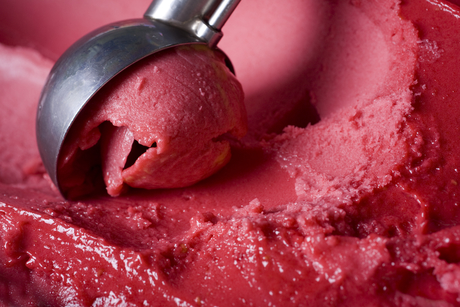Slower melting ice-cream

A naturally occurring protein that can be used to create ice-cream that is more resistant to melting has been discovered. The protein binds together the air, fat and water in ice-cream, creating a super-smooth consistency.
The new ingredient, BslA, could enable ice-creams to keep frozen for longer in hot weather. It could also prevent gritty ice crystals from forming, ensuring a fine, smooth texture like those of luxury ice-creams. The development could allow products to be manufactured with lower levels of saturated fat — and fewer calories — than at present.
Researchers at the Universities of Edinburgh and Dundee developed a method of producing the new protein — which occurs naturally in some foods — in friendly bacteria. They estimate that ice-cream made with the ingredient could be available within three to five years.
The protein works by adhering to fat droplets and air bubbles, making them more stable in a mixture. Using the ingredient could offer significant advantages for ice-cream makers. It can be processed without loss of performance and can be produced from sustainable raw materials.
Manufacturers could also benefit from a reduced need to deep-freeze their product, as the ingredient would keep ice-cream frozen for longer. The supply chain would also be eased by a reduced need to keep the product very cold throughout delivery and merchandising.
BslA was developed with support from the Engineering and Physical Sciences Research Council and the Biotechnology and Biological Sciences Research Council.
Professor Cait MacPhee, of the University of Edinburgh’s School of Physics and Astronomy, who led the project, said: “We’re excited by the potential this new ingredient has for improving ice-cream, both for consumers and for manufacturers.”
Dr Nicola Stanley-Wall, of the University of Dundee, said: “It has been fun working on the applied use of a protein that was initially identified due to its practical purpose in bacteria.”
Beany flavour study to enhance the appeal of soy-based foods
A scientific study at the University of Missouri is exploring novel ways to improve the flavour...
FCR image bank provides precise food cue feedback
GMU's Food Cue Reactivity image bank update produces more accurate and consistent...
Aust and NZ baby food nutritional claims unfounded: study
New research has shown that baby foods often feature misleading claims aimed at convincing...








